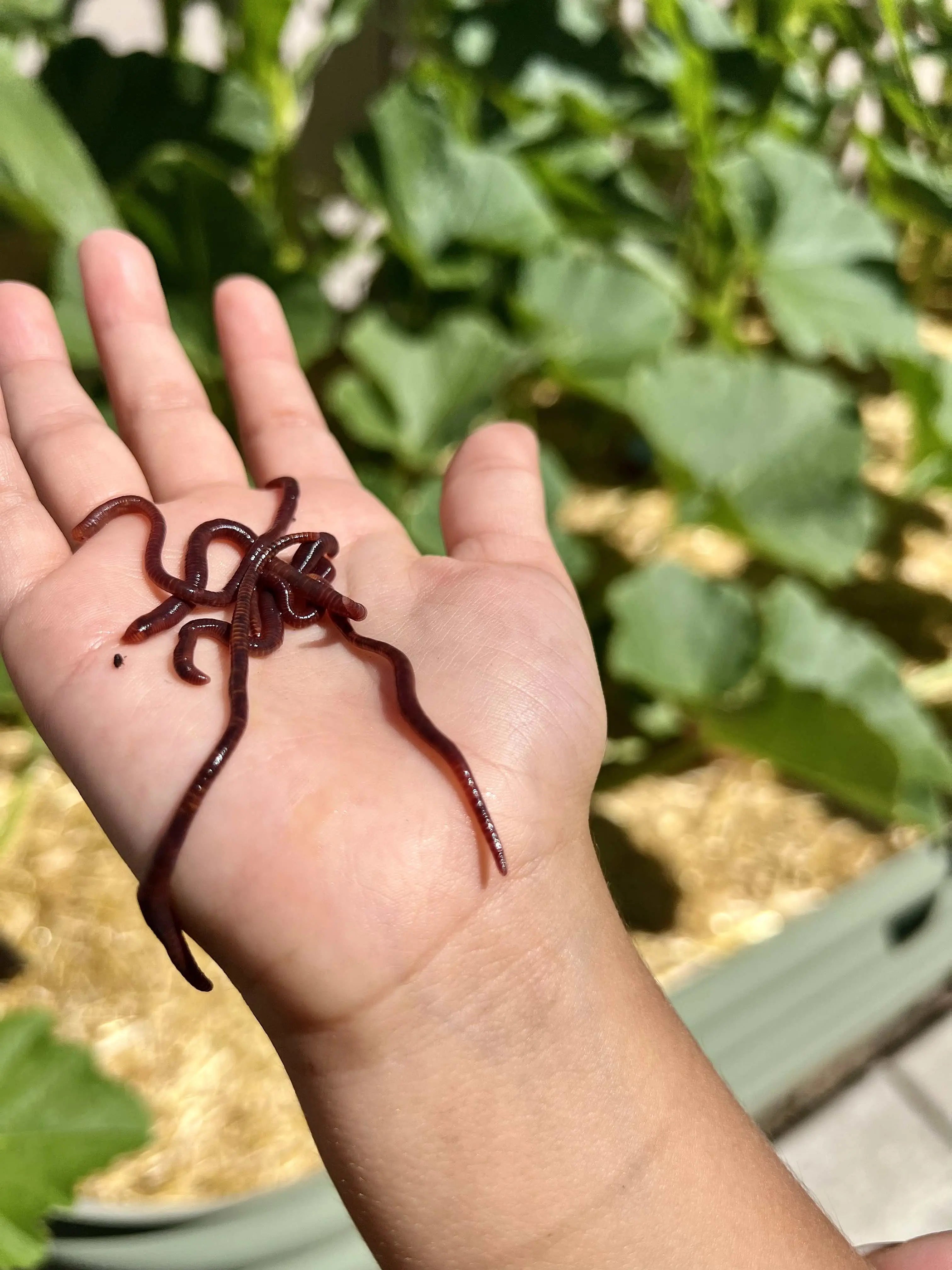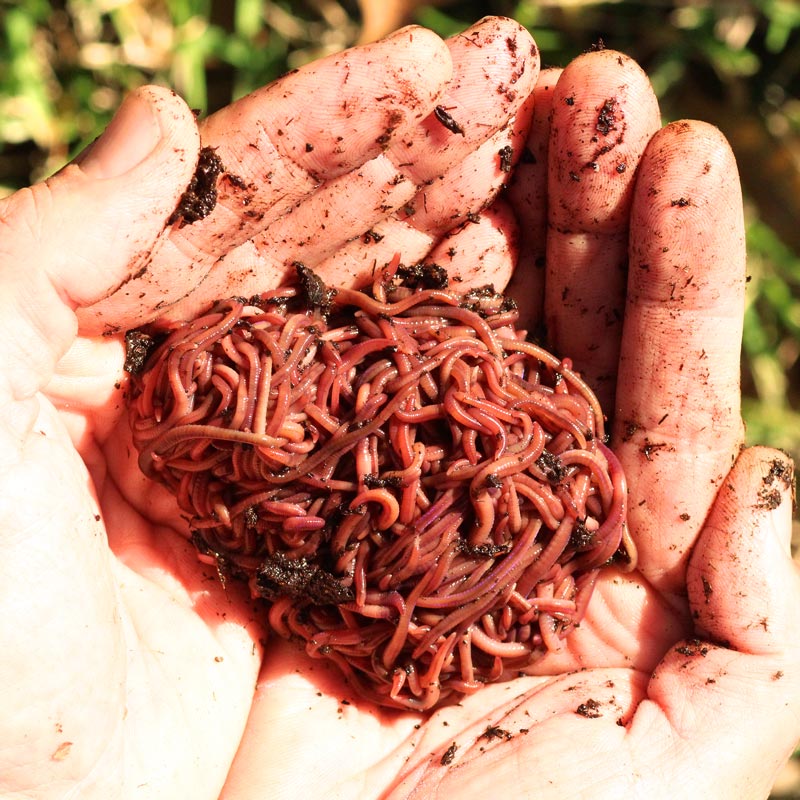Red Wiggler Worms - Perfect for Vermicomposting and Dirt Enrichment
Red Wiggler Worms - Perfect for Vermicomposting and Dirt Enrichment
Blog Article
Checking Out the Remarkable Globe of Red Wiggler Worms: Lasting Solutions for Waste Management and Dirt Wellness
Within the complex internet of sustainable solutions for waste management and dirt health and wellness, one often ignored yet exceptionally valuable gamer emerges - the red wiggler worm. These humble animals, with their starved cravings for raw material, hold the key to transforming waste right into nutrient-rich compost. As we peer into the interesting globe of red wigglers, a much deeper understanding of their role in the ecological community unfolds, clarifying their prospective to transform the means we approach garbage disposal and dirt fertility.
The Role of Red Wigglers in Waste Monitoring
Using red wiggler worms in waste monitoring processes demonstrates a sustainable and effective method for natural matter decomposition. These voracious composting champs come from the species Eisenia fetida and are renowned for their capability to break down food scraps, paper, and various other organic products right into nutrient-rich compost. Red wigglers master transforming cooking area waste and garden particles into vermicompost, a valuable resource that can improve soil fertility and structure.
Red wigglers play a critical role in waste administration by consuming and digesting organic matter, therefore decreasing the quantity of waste that winds up in land fills. Their digestive process not just helps to divert waste from typical disposal methods yet additionally produces premium garden compost that can be utilized in agriculture, landscaping, and horticulture. Furthermore, the spreadings left by red wigglers are abundant in vital nutrients like potassium, phosphorus, and nitrogen, making them a natural and lasting option to chemical plant foods.
Advantages of Vermicomposting With Red Wigglers

One trick benefit is the speed at which red wigglers break down organic products. These worms have a voracious appetite and can refine big quantities of food waste rapidly, resulting in faster garden compost production contrasted to traditional techniques. Additionally, the vermicompost created by red wigglers is rich in crucial nutrients like nitrogen, phosphorus, and potassium, making it an excellent organic fertilizer for plants.
In addition, vermicomposting with red wigglers helps divert natural waste from garbage dumps, reducing greenhouse gas discharges and adding to an extra lasting waste monitoring system. By reusing raw material with vermicomposting, neighborhoods and people can lessen their ecological footprint while creating a useful source for improving soil structure and fertility. Overall, the benefits of vermicomposting with red wigglers make it a cost-efficient and green solution for taking care of natural waste and enhancing soil health and wellness.
Red Wigglers: Nature's Soil Engineers
Understood for their impressive ability to change the structure and quality of dirt, red wigglers play an important duty in improving ecosystem characteristics via their dirt engineering prowess. These modest earthworms burrow with the soil, producing tunnels that enhance aeration and water seepage. By doing so, they promote origin growth and nutrient uptake by plants, inevitably adding to raised soil fertility. Red wigglers also break down organic issue like decomposing leaves and plant particles, transforming them into nutrient-rich castings that enhance the dirt with helpful microbes and important minerals. Furthermore, their consistent activity aids to blend soil layers, dispersing nutrients extra equally and producing a healthy and balanced setting for dirt organisms.

Red Wigglers and Soil Health
With their profound influence on dirt composition and environment characteristics, red wigglers are crucial in supporting soil wellness with their diverse dirt engineering tasks. These simple creatures play a vital role websites in enhancing dirt fertility and structure. Red wigglers damage down organic matter, such as decaying leaves and cooking area scraps, into nutrient-rich spreadings that boost soil quality. Their burrowing tasks develop passages that freshen the soil, allowing much better water infiltration and root growth. By raising microbial activity in the dirt, red wigglers help in nutrient cycling, making necessary nutrients much more offered to plants. Their spreadings have beneficial microorganisms that help suppress hazardous microorganisms, advertising plant wellness. Red wigglers also add to dirt gathering, which boosts dirt framework and security, lowering erosion risks. Overall, the presence of red wigglers in the dirt is a clear sign of a healthy and vivid community, showing the necessary role they play in keeping soil health and wellness and sustainability.
Implementing Red Wigglers for Sustainability
The combination of red wiggler worms into sustainable agricultural methods showcases their pivotal duty in cultivating ecological stewardship and resource effectiveness. These laborious creatures use a wide range of advantages when executed attentively. By introducing red wigglers into composting systems, organic waste can be effectively transformed right into nutrient-rich vermicompost, decreasing the demand for chemical plant foods and shutting the loophole on natural matter utilization. In addition, the spreadings created by red wiggler worms are rich in helpful microbes and enzymes hop over to here that improve soil framework, improve water retention, and promote plant growth.
In addition to throw away administration, red wigglers also play a critical duty in sustainable food production. Their ability to swiftly process raw material not just decreases greenhouse gas emissions from breaking down waste yet additionally provides a lasting resource of protein for animals and aquaculture feed. Incorporating red wiggler worms into agricultural systems represents an easy yet powerful service for enhancing sustainability, advertising circular economic situations, and preserving our priceless natural resources.
Final Thought
To conclude, red wiggler worms play an important role in waste monitoring through vermicomposting, profiting both the atmosphere and dirt health. Their capacity to break down raw material and enhance dirt structure makes them useful allies in sustainable methods. By applying red wigglers into waste administration systems, we can decrease waste, enhance soil high quality, and promote ecological sustainability for a healthier planet.
Understood for their remarkable capacity to change the composition and top quality of soil, red wigglers play a crucial function in improving environment dynamics via their dirt engineering expertise. Generally, red wigglers are essential dirt engineers that play an important role in keeping soil health and wellness and promoting sustainable ecological community operating.
With their extensive influence on soil structure and community characteristics, red wigglers are important in nurturing dirt wellness with their diverse soil design activities. Red wigglers also contribute to dirt aggregation, which enhances dirt structure and stability, decreasing disintegration dangers. Generally, the visibility of red wigglers in the dirt is a clear sign of a vivid and healthy community, showing the crucial function they play in preserving dirt wellness and sustainability.
Report this page